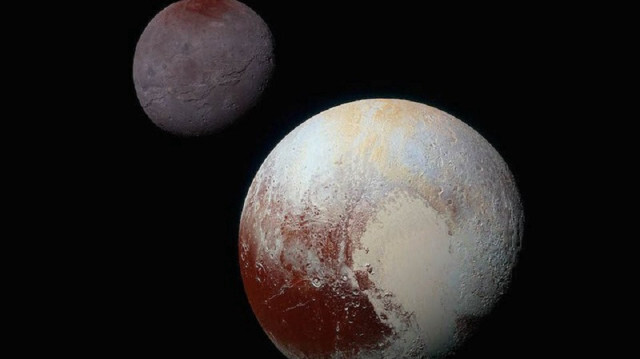
Scientists detect carbon dioxide and hydrogen peroxide, offering insights into moon's complex chemical makeup
Scientists have detected carbon dioxide and hydrogen peroxide on Charon, Pluto's largest moon, offering new insights into the composition and evolution of distant solar system bodies, according to a recent study.
Using the James Webb Space Telescope, researchers from the Southwest Research Institute (SWRI) gathered detailed observations, building on earlier findings from NASA's New Horizons mission.
Charon, previously known for its icy composition of crystalline water and ammonia, now reveals a more complex chemical makeup.
The study, published in Nature Communications on Tuesday, highlights the importance of these findings in understanding Charon's evolution.
These "insights into the chemical diversity and evolutionary processes on Charon" are crucial, the research team stated.
Lead researcher Silvia Protopapa explained to CBS News that "beyond Neptune, a fascinating collection of small bodies known as Trans-Neptunian Objects (TNOs) orbits the Sun. These objects serve as time capsules, offering scientists a glimpse into the early solar system."
Charon, about half the size of Pluto at 754 miles wide, forms a unique double dwarf planet system with Pluto due to their similar sizes.
The new data from Webb's near-infrared spectrograph provide a clearer picture of its surface composition, something previous missions could not fully capture.
Protopapa emphasized that further research is needed to distinguish which compounds on Charon remain in their original state and which have been altered by solar radiation and impacts.
"Understanding this distinction is crucial for piecing together the nature of the primordial disk from which these objects formed 4.5 billion years ago," she said.
This research could also provide broader insights into other icy bodies in the Kuiper Belt and the early solar system's formation.

